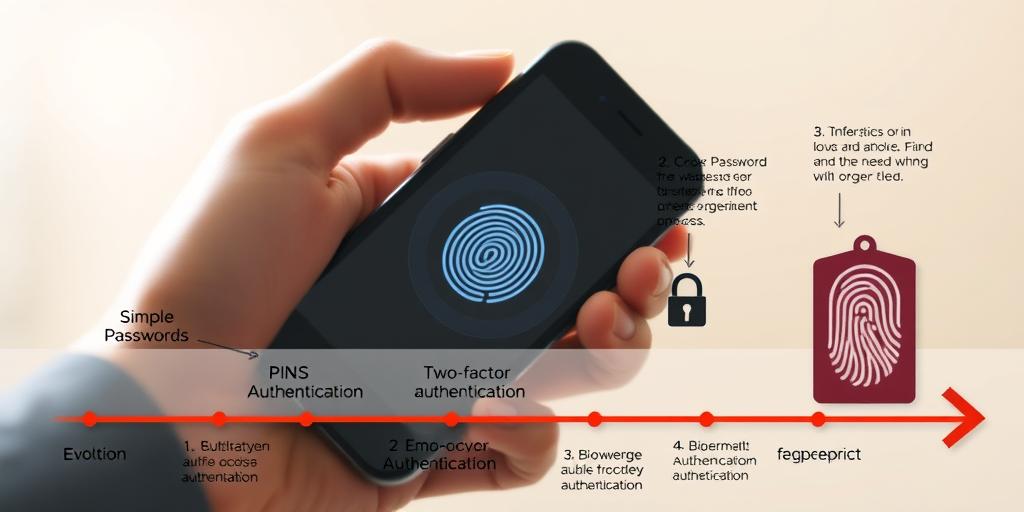The internet has become an integral part of our lives, connecting us to information, services, and each other. This interconnectedness has also brought about new challenges, particularly in the realm of online security. From the early days of simple passwords to the advanced biometric authentication methods of today, the journey of online security has been marked by innovation and adaptation.
The Evolution of Online Security
Early Days: Simple Passwords and Their Limitations
In the early days of the internet, online security was primarily based on simple passwords. Users were often encouraged to choose short and easy-to-remember passwords, which were easily guessable by hackers. This lack of complexity made online accounts vulnerable to brute-force attacks, where hackers would try various combinations until they gained access.
The Rise of Complexity: Passwords with Numbers, Symbols, and Length
As the internet evolved, so did the understanding of online security threats. The need for stronger passwords became apparent, and users were encouraged to incorporate numbers, symbols, and increase the length of their passwords. This added complexity made it harder for hackers to guess passwords, increasing the security of online accounts. However, even with these measures, passwords remained vulnerable to phishing attacks, where hackers would trick users into revealing their credentials.
The Need for Stronger Authentication: Two-Factor Authentication (2FA)
To further enhance security, two-factor authentication (2FA) emerged. 2FA requires users to provide two forms of authentication, typically a password and a one-time code sent to their phone. This adds an extra layer of security, making it much harder for hackers to gain access to accounts, even if they manage to steal a password. 2FA has become increasingly common across various online services, significantly improving the security of user accounts.
The Advent of Biometrics: A New Era of Security
Fingerprint Scanning: A Convenient and Secure Option
Biometric authentication has revolutionized the way we secure our online accounts. Fingerprint scanning is one of the most widely used biometric methods, offering a convenient and secure way to verify identity. Fingerprint scanners are integrated into smartphones, laptops, and even door locks, making it easy to unlock devices and access accounts with a simple touch.
Facial Recognition: Enhancing Security and Convenience
Facial recognition is another rapidly growing biometric authentication method. This technology uses facial features to identify individuals, allowing for secure access to devices and services. Facial recognition is becoming increasingly prevalent in smartphones, laptops, and even payment systems, offering a seamless and secure authentication experience.
Iris Scanning: The Most Secure Biometric Method
Iris scanning is considered the most secure biometric method due to the unique and complex patterns of the iris. This technology uses cameras to capture images of the iris, comparing them to stored templates to verify identity. Iris scanning is often used in high-security environments, such as government buildings and financial institutions, ensuring maximum security.
Voice Recognition: A Growing Trend in Security
Voice recognition is another biometric method gaining popularity. This technology analyzes the unique characteristics of a person’s voice, allowing for secure authentication. Voice recognition is being incorporated into smartphones, smart home devices, and even online banking systems, offering a convenient and secure way to access accounts.
The Future of Online Security: A Blend of Biometrics and Artificial Intelligence
AI-Powered Security Systems: Detecting and Preventing Threats
The future of online security lies in the intersection of biometrics and artificial intelligence (AI). AI-powered security systems can analyze vast amounts of data, identify suspicious patterns, and proactively detect and prevent threats. These systems can learn from past attacks and adapt to new threats, ensuring continuous protection.
Biometric Authentication: A Key Component of Future Security
Biometric authentication will continue to play a crucial role in future online security. As biometric technologies continue to evolve, they will become more accurate, reliable, and accessible. This will enhance the security of online transactions, protect sensitive data, and provide users with greater peace of mind.
The Importance of Privacy and Data Security in a Biometric World
With the increasing reliance on biometrics, it is crucial to address concerns about privacy and data security. Secure data storage and access control are essential to prevent unauthorized use of biometric data. Transparent policies and robust security measures are necessary to build trust and protect user privacy in a biometric world.
Embracing the future of secure online experiences requires a proactive approach to online security. By understanding the evolution of online security measures, staying informed about the latest technologies, and practicing good security habits, individuals can navigate the online world with greater confidence and security.




